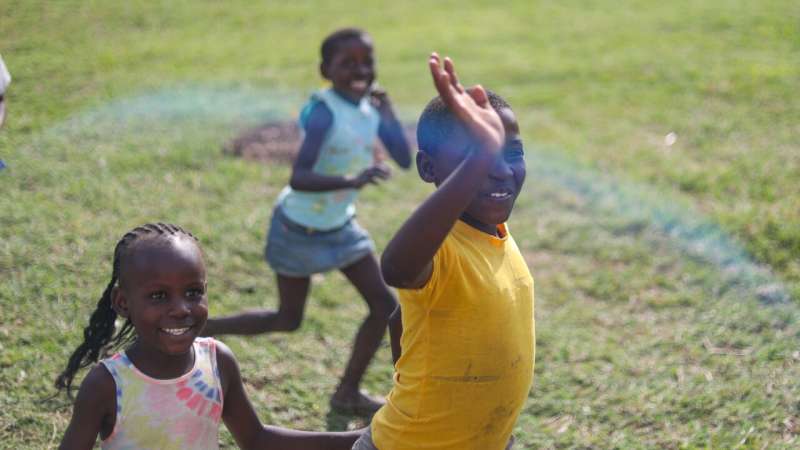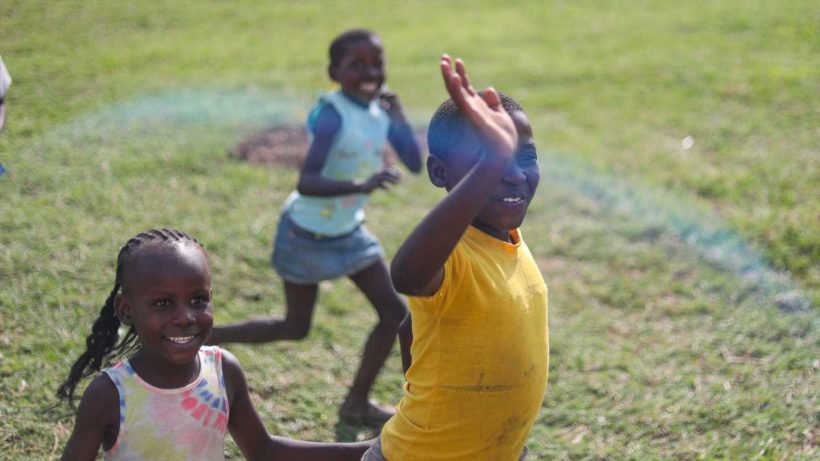
A new study published today urges policymakers to improve children’s health care and reduce air pollution. It aims to highlight the threat posed by pollution to children’s lung health.
In a world first, the study, which is co-authored by researchers from the University of Portsmouth, established that children living in informal settlements (slums) are at a greater risk of developing asthma compared to their counterparts living in formal settings. The study is called “Tupumue,” and also concludes that such children also lack access to appropriate health care for diagnosis and treatment.
Tupumue is a Kiswahili word meaning “let us breathe.” The study, published in Thorax, is a three-year collaboration between Kenya Medical Research Institute (KEMRI) the Liverpool School of Tropical Medicine (LSTM) and universities including the University of Portsmouth.
Professor Graham Devereux, who led the study on behalf of LSTM said, “This is the first study to show that the 350–500 million children living in informal (slum) settlements around the world are at increased risk of developing asthma, that this is more severe and is associated with sources of indoor and outdoor air pollution. Also, those children are less likely to be diagnosed with, and treated for, asthma.”
Director General of KEMRI, Professor Elijah Songok, said, “KEMRI is proud to have participated in this collaborative landmark study which shows a link between air quality and children’s lung health in informal settlements. These results are highly encouraging, and we hope will further persuade policymakers to improve children’s health care and reduce air pollution in order to scale down cases of asthma.”
The study team recruited more than 2,400 children aged five to 18 from schools in two close but very different communities in Nairobi, Kenya—one an informal settlement and the other a formal gated community. The team used scientific measures including questionnaires and lung function and air pollution tests to quantify the children’s health, well-being and local air quality.
Very early on, the team realized that community buy-in would be vital to the success of the study, both in recruiting children and in revealing their stories, so researchers from the University of Portsmouth devised activities to sensitize local people to the presence and purpose of the study. Academics, community members and artists came together to produce a music video, theater, visual arts, and a puppet show, Billy’s Day Out, which dramatized the Tupumue data collection process.
Dr. Cressida Bowyer, deputy director of the Revolution Plastics initiative at the University of Portsmouth said, “Seeing the children engage and connect with the sensitization outputs was fantastic. Using a process of co-creation with community champions, artists and musicians played a huge part in making the campaign such a success.”
Creative methods were also employed to help uncover young people’s perceptions of air quality, lung health and environmental pollution. The team used pupils’ drawn stories and videoed walking interviews to tease out stories, and even initiated participatory theater to help explore community knowledge about what damages lungs.
Dr. Louis Netter, senior lecturer and course leader in illustration, University of Portsmouth said, “The arts provide a way for people to have agency and communicate their thoughts, perceptions and desires. When part of a qualitative data set, it deepens an understanding of specific concerns facing individuals in specific contexts. The arts are powerful tools for understanding the present and imagining better futures.”
As well as in a published paper, the findings of the Tupumue study are being presented at the Pan African Thoracic Society/Respiratory Society of Kenya Congress in Mombasa, Kenya on 7 June. There, team members will be joined by local community members to describe the study and its findings to an international audience of respiratory clinicians and researchers into respiratory disease.
With more than one billion people living in slums and 500 million children at increased risk of non-communicable lung diseases, the team hopes that its findings provide impetus for real change. Graham Devereux said, “We hope that Tupumue will provide informal settlements with the information they need to persuade policymakers to improve the care of children with lung disease and to reduce air pollution exposures.”
Dr. Meme added, “Even as enactment and enforcement of laws to reduce outdoor and indoor air pollution that our study showed have an association with symptoms of asthma in children is ongoing, in the short term residents of informal settlements could be assisted in addressing some of the contributors to indoor air pollution that were found to be associated with symptoms of asthma, such as burning of mosquito coils, through provision and use of affordable alternatives such as insecticide-treated mosquito nets.”
It is also hoped that the data contributes to identifying further areas of research and helps to target interventions which can greatly improve the lives of those in the local community.
More information:
Hellen Meme et al, Asthma symptoms, spirometry and air pollution exposure in schoolchildren in an informal settlement and an affluent area of Nairobi, Kenya, Thorax (2023). DOI: 10.1136/thorax-2023-220057
Journal information:
Thorax
Source: Read Full Article






